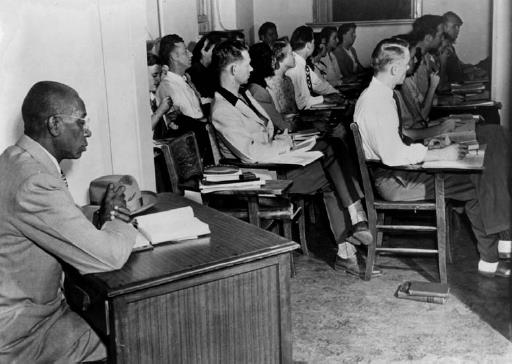Law and Famous TrialsRacial Segregation |
What was the Supreme Court’s role in racial segregation? |
Though most segregation laws (or “Jim Crow laws”) were overturned by decisions of the Supreme Court during the 1950s and 1960s, the Court was righting its own wrong: In the late 1800s, during the years following the Civil War (1861–65) and the abolition of slavery, the Supreme Court made rulings that actually supported segregation laws at the state level. The most famous of these was the 1896 case of Plessy v. Ferguson, in which the highest court in the land upheld the constitutionality of Louisiana’s law requiring “separate-but-equal” facilities for whites and blacks in railroad cars. (One strong dissenting opinion came from Associate Justice John Marshall Harlan, who declared “the Constitution is color blind.”) Following the Plessy v. Ferguson decision, states went on to use the separate-but-equal principle for 50 years, passing Jim Crow laws that set up racial segregation in public schools, transportation, and in recreation, sleeping, and eating facilities. This meant there were drinking fountains, benches, restrooms, bus seats, hospital beds, and theater sections designated as “Whites Only” or “Colored.” One Arkansas law even provided that witnesses being sworn in to testify in a courtroom be given different Bibles depending on the color of their skin.
Two landmark Supreme Court decisions came in 1954 and 1960 in the cases of Brown v. the Board of Education and Boynton v. Virginia. In the first case, parents of black children in Topeka, Kansas, elementary schools charged that the segregation of white and black students in the public schools denied black children the equal protection cited in the Fourteenth Amendment (1868). The parents were supported in their fight by the NAACP (National Association for the Advancement of Colored People), whose legal counsel included Thurgood Marshall (1908–1993). On May 17, 1954, the Supreme Court ruled that segregated schools do violate the equal protection clause, overturning the separate-but-equal doctrine previously upheld by Plessy v. Ferguson. The federal government again made a stand against state segregation laws when, in December 1960, chief appellant lawyer Thurgood Marshall argued the case of Howard University law student Bruce Boynton before the Supreme Court. Again ruling in favor of the plaintiff, who had charged that the segregation laws at the Richmond, Virginia, bus station violated the federal antisegregation laws, Washington sent a clear message to the states that public facilities are for the use of all citizens, regardless of color. These decisions combined with the activism of the civil rights movement to outlaw racial segregation.

